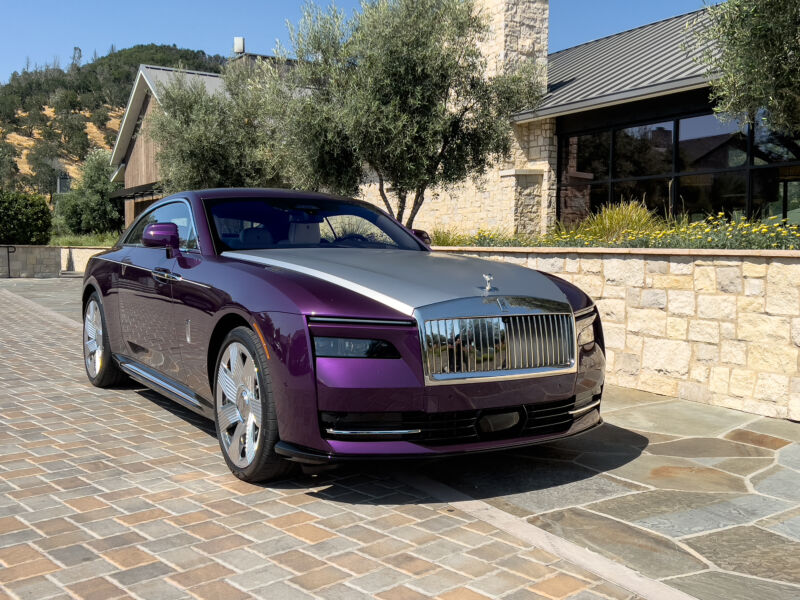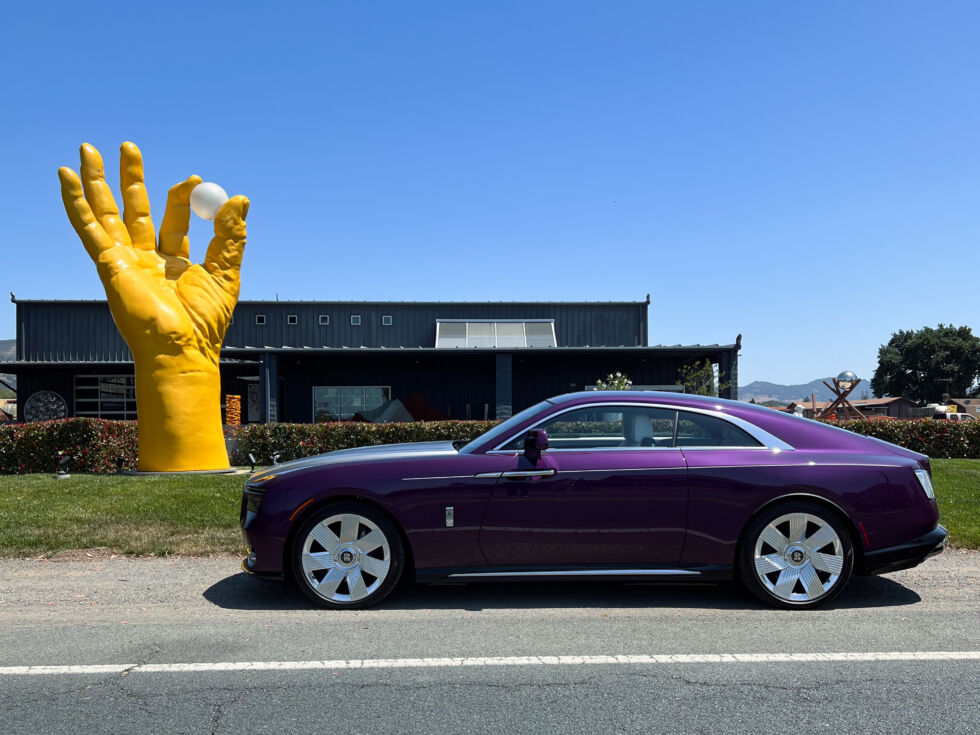
A fully electric Rolls-Royce has been some years in the making. Back in 1900, Charles Stewart Rolls proclaimed the electric motor's suitability for automobiles—silent, smooth, and exhaust-free are all great attributes for a luxury car. Back then, the problem was a lack of charging stations, something that appears to be improving 123 years later. That means the world is now ready for the Spectre.
As you might expect of a car wearing the pantheon grille and Spirit of Ecstasy mascot—subtly redesigned here for improved aerodynamic efficiency—there is little shy or retiring about the Spectre, particularly when it's a vivid purple, as was the case for our test car.

It's a two-door, four-seat coupe, and big one, too: 215.6 inches (5,475 mm) long, 79.4 inches (2,017 mm) wide, and 61.9 inches (1,573 mm) tall, with a curb weight of 6,371 lbs (2,890 kg). Despite that, the somewhat Art Deco-inspired shape cleaves the air with a drag coefficient of 0.25—the shape spent more than 800 hours being refined in the wind tunnel, which is about twice as much time as F1 cars are currently allowed.
Under the skin, the Spectre uses Rolls-Royce's Architecture of Luxury flexible platform, which employs cast and extruded aluminum to make a very stiff space frame in almost any dimensions the designers might need. The architecture was designed to be powertrain-agnostic, and the addition of a battery pack between the sills means that the Spectre has by far the greatest torsional rigidity of any Rolls-Royce yet, about 30 percent greater than the Rolls-Royce Ghost.
For as much as Rolls-Royce has publicized one of its founders' early words on the need for "fixed charging stations," customer feedback showed Rolls-Royce that its customers overwhelmingly want to charge at home or the office, we were told during our pre-drive briefing.

Little more was said about the charging experience for the Spectre. I had to check that it actually had a DC fast charging port—it does, using CCS1—and 10–80 percent state of charge should take 34 minutes at up to 195 kW, according to the press kit. But let's be completely clear here: Rolls-Royce owners don't really do road trips. 500-mile journeys are for helicopters or planes, and the owners can pick up one of their other cars when they land.
The Spectre uses a twin-motor powertrain. The front axle motor provides 255 hp (190 kW) and 270 lb-ft (365 Nm), the rear generates 483 hp (360 kW) and 524 lb-ft (710 Nm), with a combined maximum output of 584 hp (430 kW) and 664 lb-ft (900 Nm). (If this seems confusing, it's because the total output of an EV is governed by how much energy the battery can output, not the sum of both motors.)
The motors are fed by a lithium-ion battery that lives between the axles. It has a gross capacity of 120 kWh and a useable capacity of 105 kWh, which should be sufficient for an EPA range of at least 260 miles, according to Rolls-Royce. That seems like a reasonable estimate; checking the trip computer showed that over a couple of thousand miles, our preproduction Spectre had averaged 2.5 miles/kWh (24.9 kWh/100 km), which is about what one would expect for a large, heavy EV—a Ford F-150 Lightning or Rivian R1S are in similar size and weight classes and return similar efficiency.
Promoted Comments